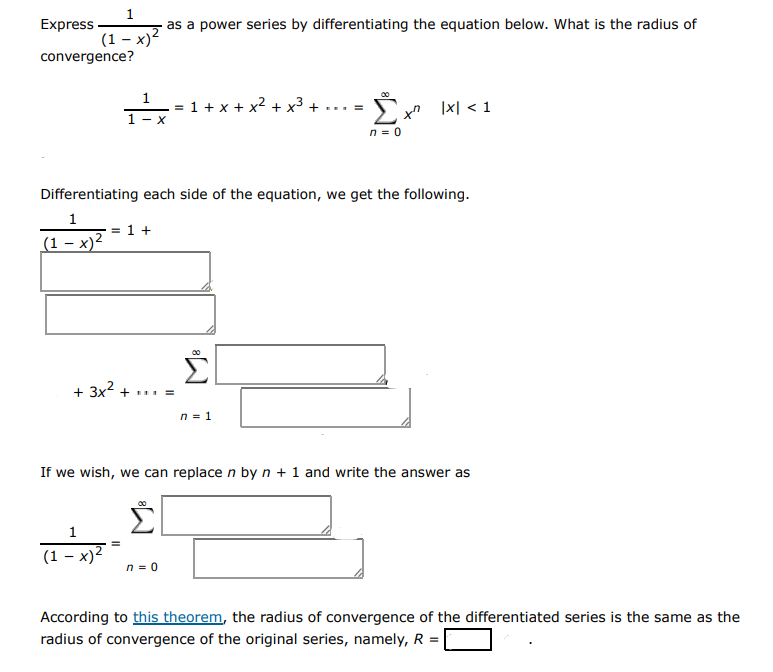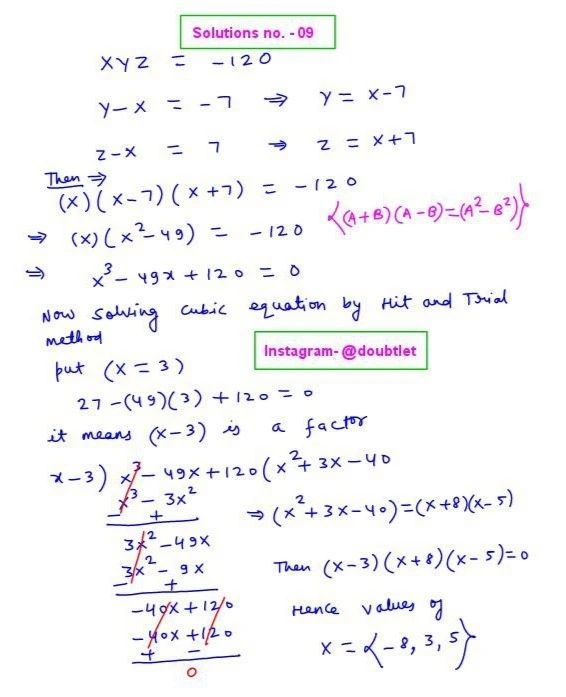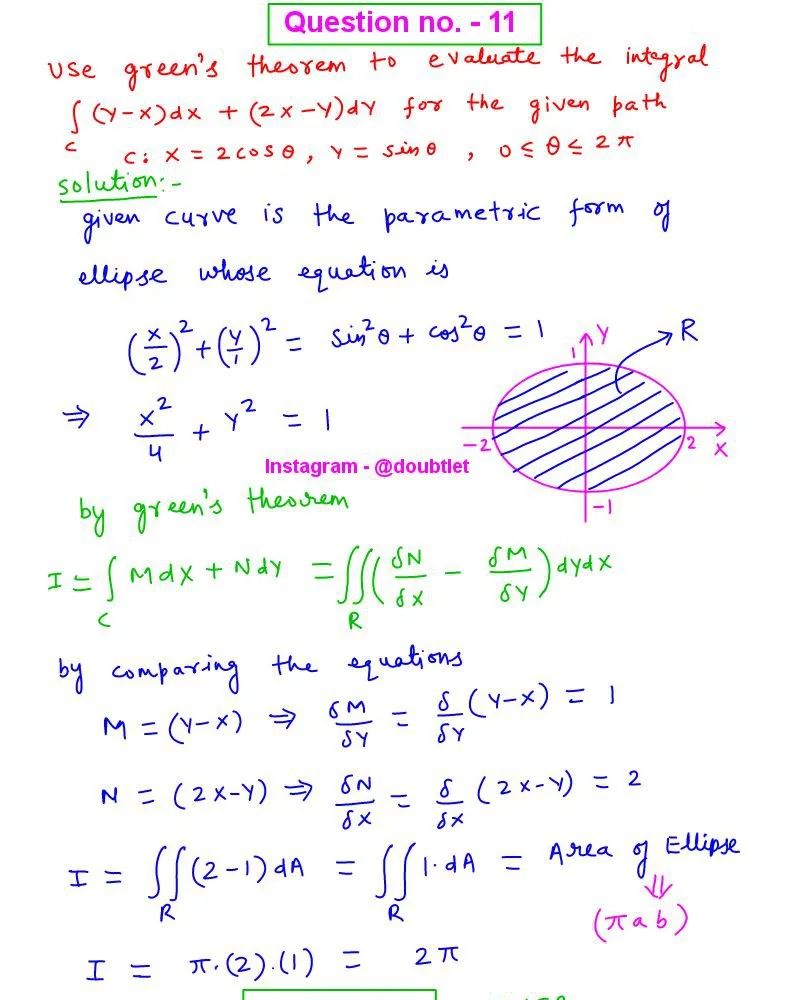









Question :
Express as a power series by differentiating the equation below. what is the radius of convergence?

Solution:

Neetesh Kumar | December 10, 2024
Calculus Homework Help
This is the solution to Math 132
Assignment: 11.9 Question Number 5
Contact me if you need help with Homework, Assignments, Tutoring Sessions, or Exams for STEM subjects.
You can see our Testimonials or Vouches from here of the previous works I have done.
Solution:
We start with the equation:
Differentiating each side of the equation, we get:
Rewriting the series by replacing with :
According to this theorem, the radius of convergence of the differentiated series is the same as the radius of convergence of the original series, namely, .
Please comment below if you find any error in this solution.
If this solution helps, then please share this with your friends.
Please subscribe to my Youtube channel for video solutions to similar questions.
Keep Smiling :-)
Comments(0)



Leave a comment